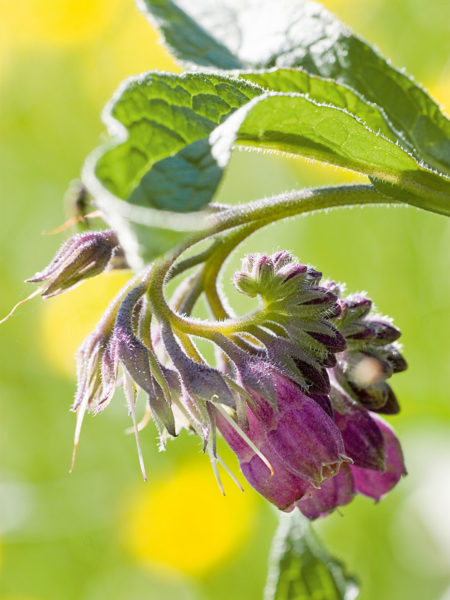Comfrey (Symphytum officinale)

The genuine comfrey belongs to the borage family. It has been used as a medicinal plant in our latitudes for over 2000 years. The Latin name Symphytum (from “growing together”) and the German name Beinwell (“which is good for the bones”) already indicate its area of application. Whereas in earlier times it was mainly used for broken bones and open wounds, today it is only recommended for external use on intact skin. Internal use, which was once common in folk medicine, has been abandoned due to the pyrrolizidine alkaloid (PA) content. Responsible manufacturers in the field of phytotherapy also use only high-quality PA-depleted comfrey preparations for external application. The value-determining ingredients in the root, herb and leaves are, in addition to an abundance of mucilages, tannins and choline, above all around 0.8 percent allantoin.
The medicinal herbs have anti-inflammatory and germ-inhibiting effects, relieve pain and irritation, reduce swelling, regulate tissue, cleanse wounds and promote cell growth and bone healing after fractures.
The main area of application of comfrey preparations in medicine in the form of ointments or extracts, also as poultices, are bruises, strains and sprains. In folk medicine, the medicinal herb is also used externally for bone fractures, bursitis and tendovaginitis, arthrosis, arthritis and pain and swelling of muscles and joints.